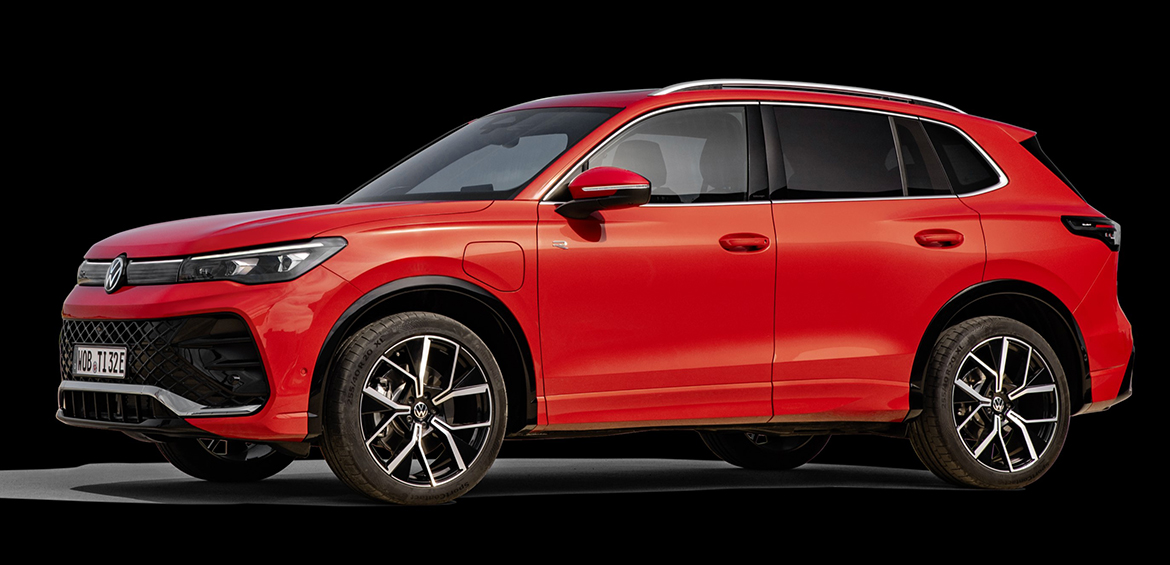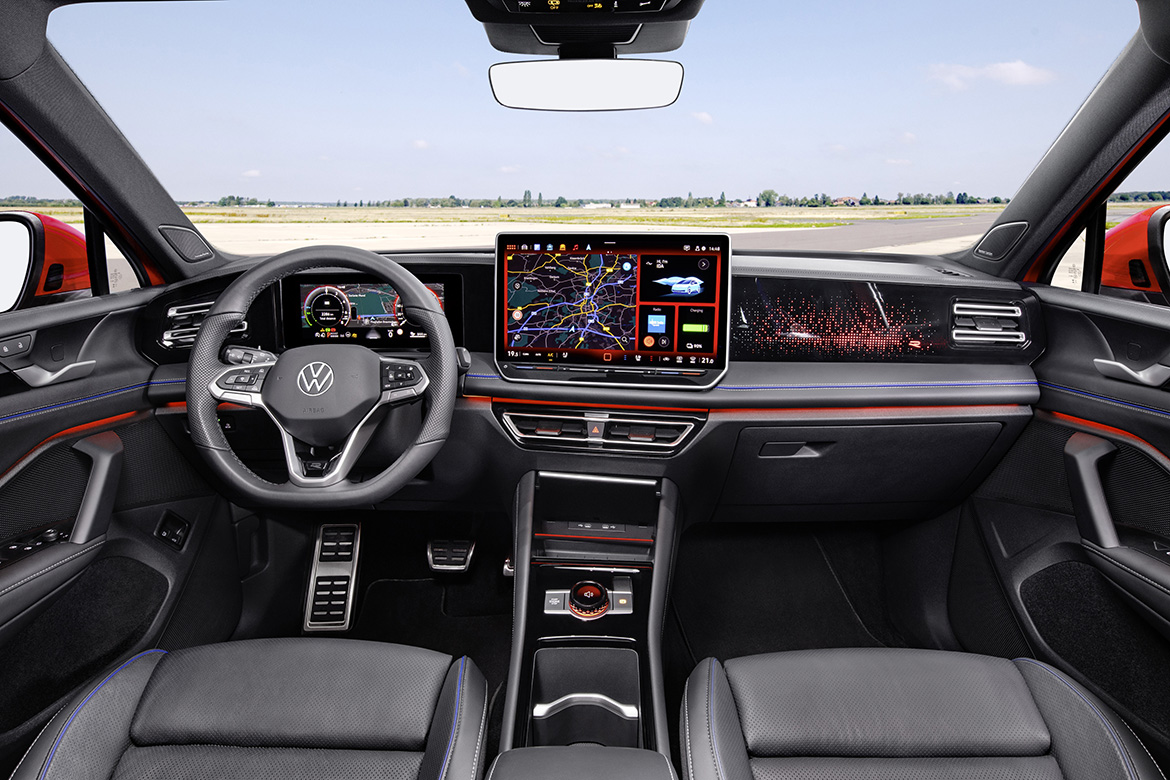Since its debut in 2007, more than 7.5 million buyers have chosen it. Volkswagen is renewing the Tiguan, one of its most successful models. If the first generation of the Tiguan combined the distinctive design of an SUV with the typically appealing character of a Volkswagen, the idea has been repeated for the new model. The distinctive element is the taller, more powerful-looking front end, into which the new flat LED headlights have been integrated. In the middle, a transverse bar with an optional LED strip replaces the classic radiator grille. The actual grille openings are located in the bumper. Side air intakes (so-called air curtains) in the bumper optimise air flow. The streamlined front design improves the Cx value, lowering it from 0.33 to 0.28.
The interior of the Tiguan has been completely redesigned by Volkswagen designers led by Andreas Mindt. The high quality of materials and finishes, optional details such as decorative stitching and colour contrasts in the surfaces are top class solutions.Precisely for this reason, the new Tiguan looks more than ever like the more compact twin sister of the big Touareg.On board, the MIB4 components also merge into a new cockpit area: intuitive, connected, essential and intelligent.Modules include the new Digital Cockpit (anti-glare digital instrumentation with the appearance of a horizontally arranged tablet), a large infotainment display with new graphics and menu structure and an equally new head-up display (projected onto the windscreen).
The third generation Tiguan is based on the latest evolutionary level of the transverse modular platform: the MQB evo. New technological developments on this platform improve the Tiguan in terms of drivability, style and efficiency. With a range of around 100 kilometres in all-electric mode, the new plug-in hybrid propulsion systems make this SUV much more efficient than previous generations.













